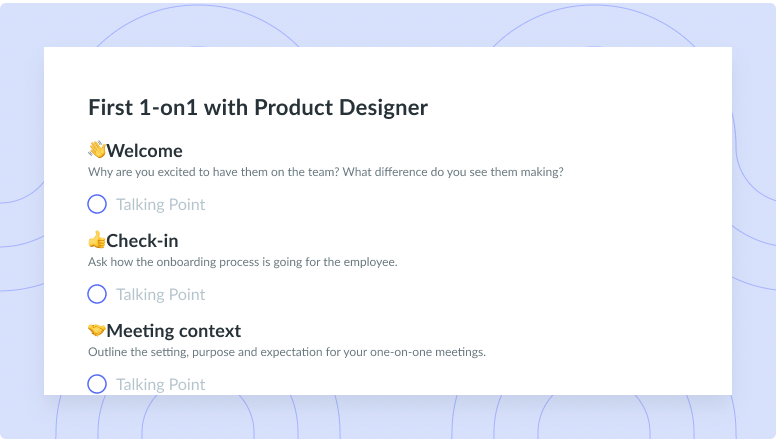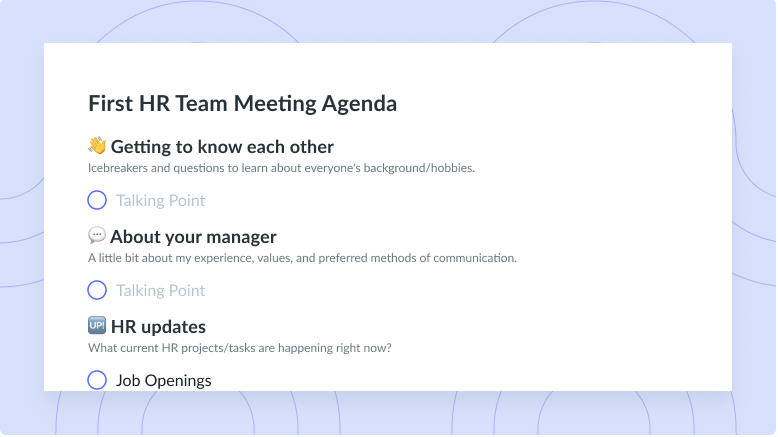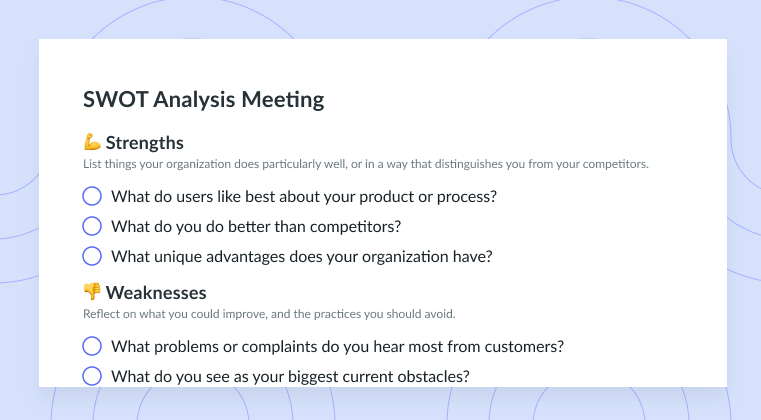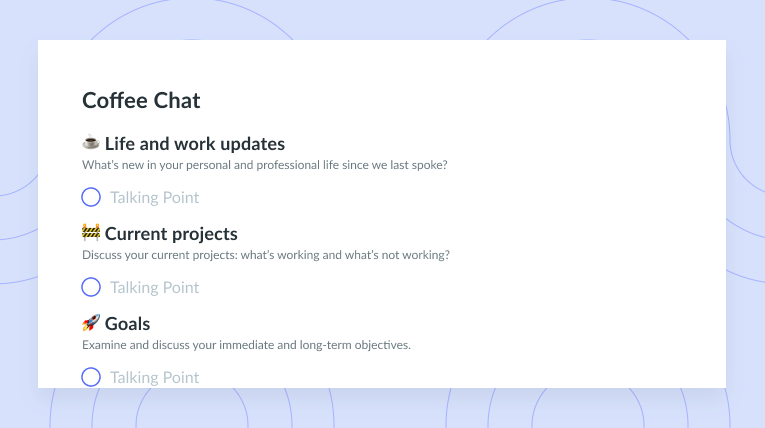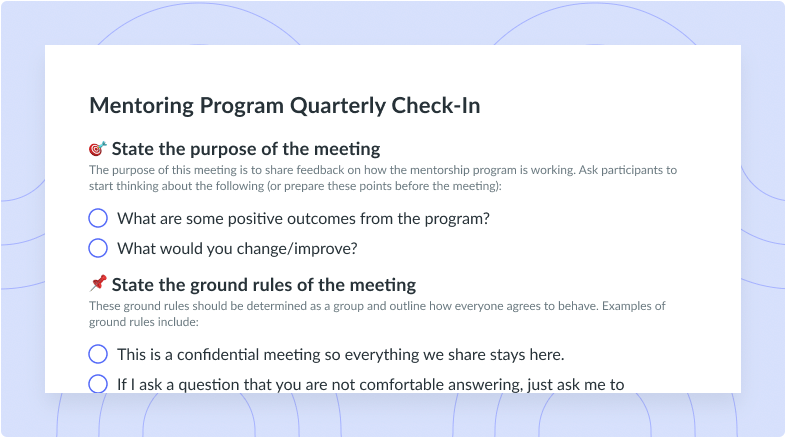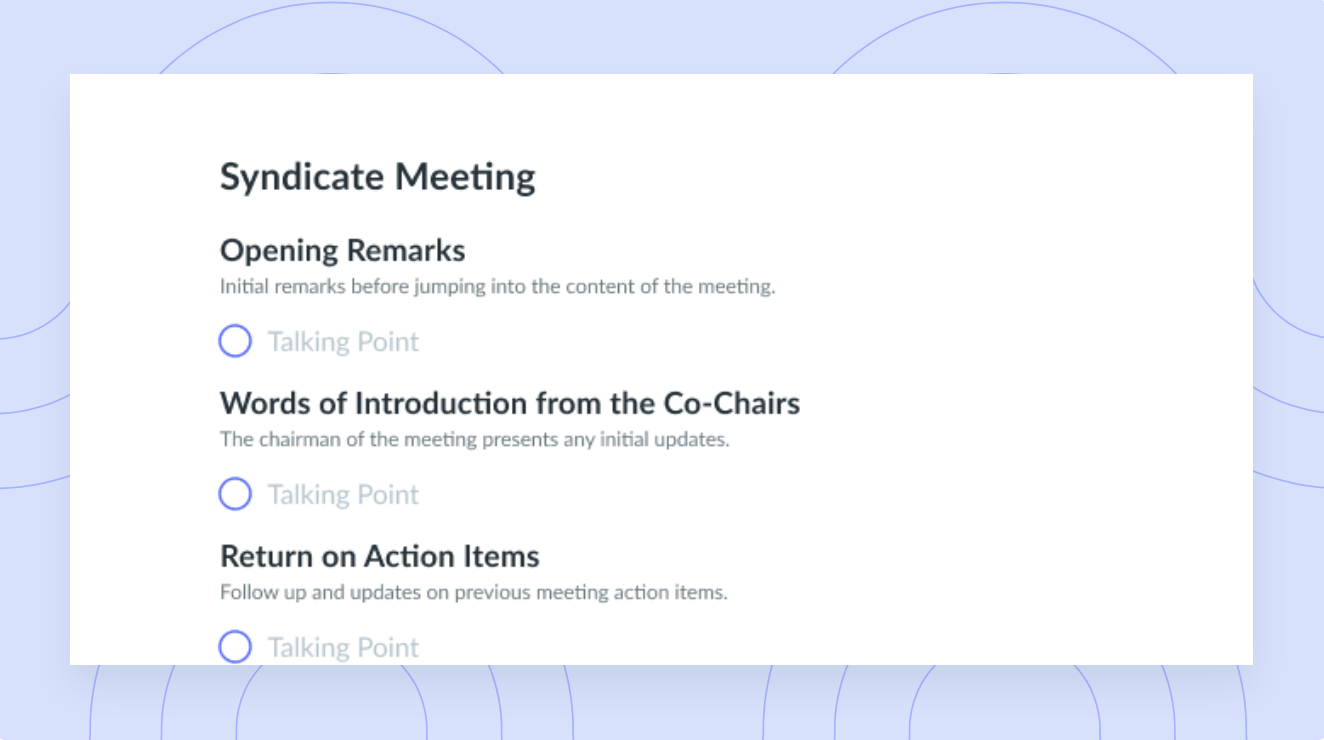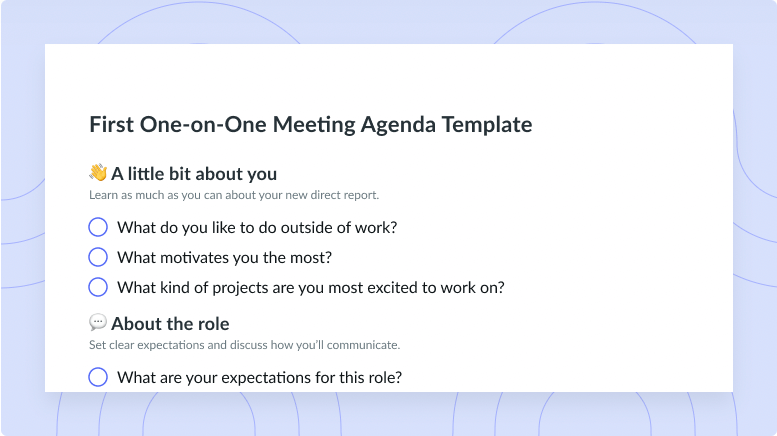
Peer Meeting Agenda Template
Get this templatePeer 1:1's build rapport between coworkers and allow teams to get a better sense of how everyone operates together to improve inter-company communication.
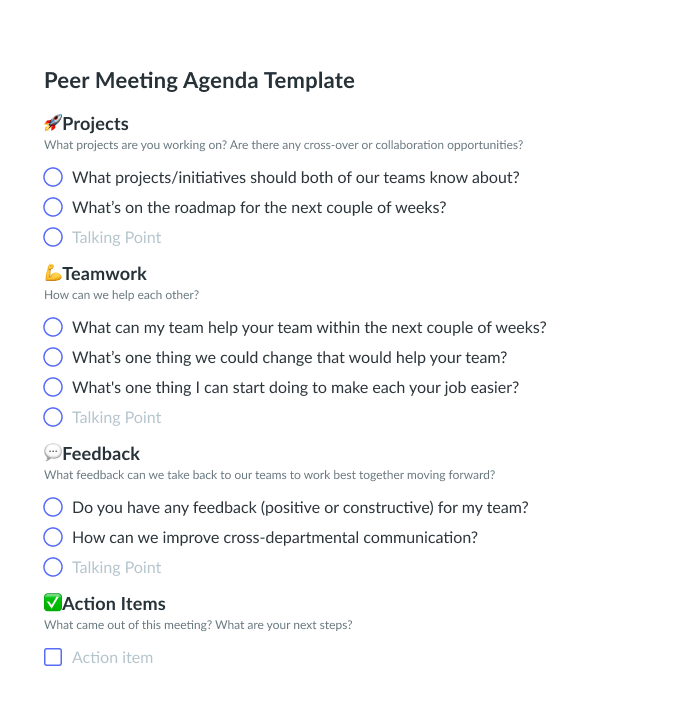

As managers, when we think about calling a meeting, it is typically between us and our team. We often don’t think to organize meetings with other managers across multiple departments, because of the way that our projects and timelines are prioritized. What we are failing to realize though, is that in touching base with other company leaders, we are gaining a significant advantage. In initiating communications across departments, you are gaining valuable insights to improve the way you and your team are executing your projects.
These “peer-to-peer one-on-one meetings” are an effective way for you to improve communications throughout the entire organization. With your needs in mind, Fellow.app has put together a peer one-on-one meeting template to facilitate teamwork and collaboration across the company.
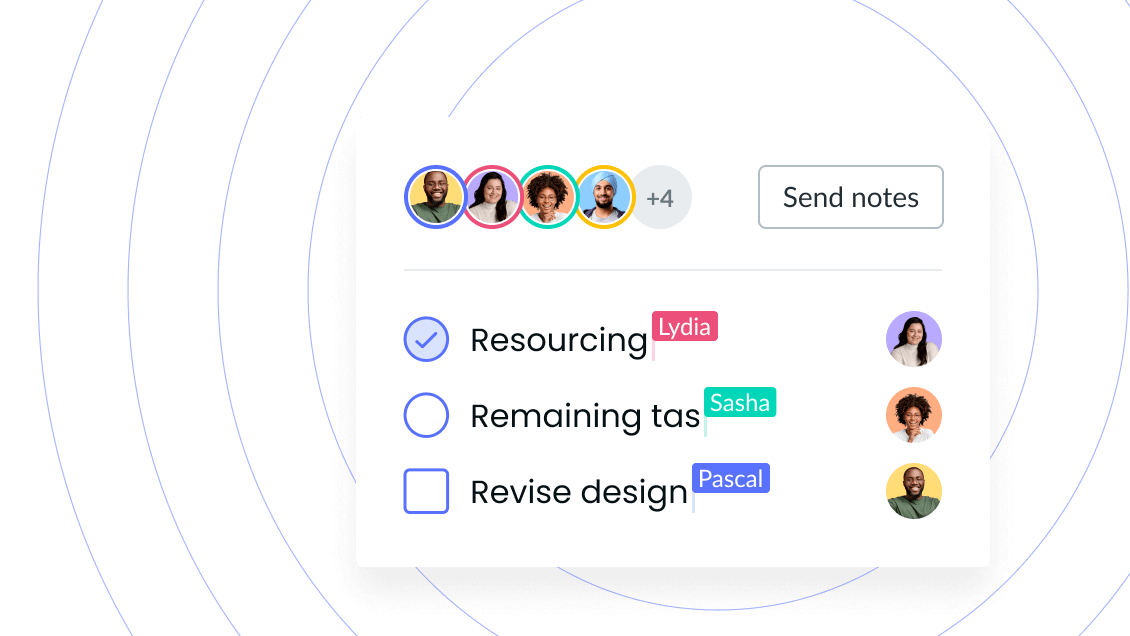
What’s inside this Peer Meeting template:
1 What’s on the roadmap for the next couple of weeks?
It’s a good idea to begin your peer one-on-one meetings by identifying any projects or initiatives that both teams should know about. In doing so, you are also identifying the information each department needs in order to be successful. You can begin to brainstorm how your teams will work together as peer managers and what common goal your teams are tackling together. Defining simple and clear expectations with one another will set a great precedent and example for all of your team members, inspiring them to collaborate and come together for the greater good of the project or initiative at hand.
Laura Spawn from Business 2 Community explains,
“The clearer the expectations, the more successful the team will be at communicating. But as executives and managers, it’s important to set the ground rules from the beginning.”
This is a great opportunity to come together as leaders and set a great precedent on how to communicate effectively between teams.
2 What’s one thing I can start doing to make your job easier?
As a manager, you already know that there is no such thing as over-communicating. In this part of your peer one-on-one meeting, you and your counterpart can come together by communicating what you can each do to ease the weight of the job at hand.
Hearing an alternate perspective is always helpful to reflect on the way that you are operating in conjunction with another group. In asking what you can do to make their job easier, you are promoting process improvement and coming together to tackle obstacles indivisible.
Some examples of process improvement initiatives that may derive from this section of your peer one-on-one meeting may be communicating things in advance, scheduling a recurring meeting between teams or creating tracking files to document decisions.
3 What’s the biggest challenge right now for you and your team?
Managers are likely to face similar challenges and this is a great opportunity to collaborate with one another and brainstorm how to overcome common obstacles.
In sharing the challenges your teams are facing, you are likely to discuss hurdles that the other manager has faced in the past. Discussing their approach to a similar situation will highlight the best way to handle the issue at hand. In discussing the challenges that each of you is facing, it may surface issues that the other team was not aware of.
This part of your peer one-on-one meeting is a strong learning opportunity for both teams to innovate how to better approach current and future challenges, in order to resolve them as seamlessly as possible. Acknowledging that you and your peer manager are both facing a variety of challenges will likely take some weight off your shoulders, knowing that you are not alone and that you are stronger together!
4 Do you have any feedback (positive or constructive) for my team?
In this final section of your peer one-on-one meeting, discussing feedback about your team is going to improve the way that you are managing your team and give you some valuable insight as to how another manager is seeing the way you and your team are working together.
This is an opportunity to gather any feedback about your direct reports from an “outside” perspective, or from someone who is slightly removed from your group.
The benefits of peer one-on-ones
Meeting with other managers and leaders in your organization will help you identify how to better support their team and make adjustments to your current processes. If you are working with another or several teams regularly, it’s a good idea to get to know the people in other groups within the organization. If you know the people you are working with more personally, it will create much better team cohesion and overall collaboration between groups.
Improving inter-company communication is likely to solidify working relationships and better equip your teams to tackle projects in a more efficient way.
Peer one-on-one meetings will significantly improve communication between teams that collaborate on projects or initiatives. In participating in such meetings, you are gaining valuable insights to improve the way you and your team are approaching executing your projects while harmonizing the exchange of work between groups. Furthermore, you are strengthening your management skills by comparing approaches and efforts with a fellow peer manager!







